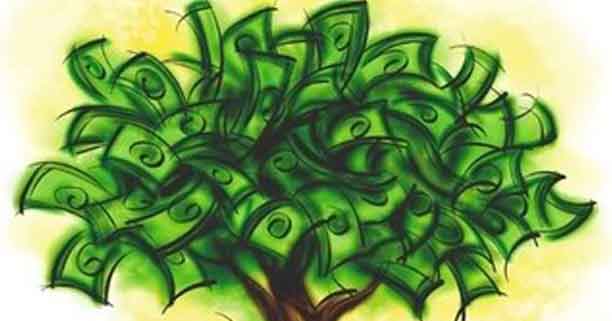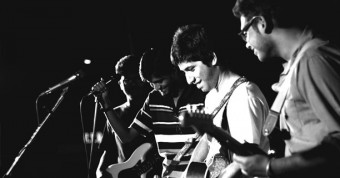For 43-year-old Moyant Pingulkar, the days of easy money are over. Once an owner of two mining trucks, he now drives a micro power tiller. Faced with no steady flow of income after the mining ban, Pingulkar, who hails from Navelim in Bicholim taluka, headed back to his one-acre paddy field.
“No doubt farming is a much cleaner and greener activity. But, I swear to God, I tell you it pays much less,” said Pingulkar. “As of now, farming can sustain my family. But to have money to save, to have surplus money to spend on improving my standard, one can’t achieve that through agriculture,” he said. That’s not to mention that driving a truck is a lot easier than ploughing a field.
It’s been over a year since the mining ban took effect, and its impact has firmly set in. The emotional roller coaster has gone from shock and disbelief to refusal to acceptance, from trying to fight the system to slow resignation. Whatever the case, many in the mining belt have realized it’s time to move on.
Goa’s economy grew by over 8 percent, above the national average of around 6 percent, in 2011-2012, the year before the mining ban went into effect. Those who keep tabs on the Goan economy – bankers, economists, government officers and others – expect the figure for 2012-2013 to come in at around 3 percent, below the national growth rate of 5 percent and a cause for concern for all those who see economic growth as the state’s best hope for advancement of virtually every kind.
While many have gone back to farming, there’s the case of Kantola Gauns from Bicholim who has gone back to being a motorcycle pilot. Others have started carrying construction material and other small-time jobs to keep the money flowing.
For families with children in search of a better life, mining was something of a godsend.
A study conducted by the Goa Institute of Management estimated that Goa’s Gross State Domestic Product would fall by Rs 8703 crore in 2012-13 and the shortfall in State Owned Revenue Receipts would be Rs 1326 crore in 2012-13.
The study pointed out that while in the year before the ban mining contributed only 5.25 percent to the economy in constant prices, the figure in current prices is 17.65 percent.
Mining, like tourism in Goa, has both direct and indirect effects, and the GIM acknowledged in its report that it could not conclusively estimate the total impact of the ban. There is no doubt that everybody right from a fuel vendor to a grocer has been affected.
According to V P C Rao, the Commissioner of Customs and Central Excise in Goa, revenue from import and export duties in April-October of the current fiscal year slipped to Rs 457 crore from Rs 1,605 crore in the corresponding period last year.
Export duty, which had been the major contributor of revenue, slipped to a meagre Rs 15 crore during the seven months period as compared to Rs 1,167 crore in the same period last fiscal. The export duty on iron ore, which is levied at 30 per cent, has been the major source of revenue from Goa to the central government, and that, too, has plummeted.
To be sure, not everyone thinks going back to agriculture is a bad thing. “What has indeed stopped is the availability of easy money,” said Radhika Naik, chairperson of the Ponda Municipal Council and a headmistress of a college. “In many way this is a good thing. At the peak of the mining ban affluence was flaunted in your face with even kids flaunting the latest gadgets and the roaming around on the latest bikes.”
She gave the example of a student at her college who took on a Rs 3.5 crore gambling debt because of the availability of easy money. “The family does not know what to do,” she said.
“The difference of those in the mining business and those not was flaunted in your face. You could see them with the latest gizmos and gadgets and today they cannot sustain such a lifestyle,” she added, stressing that the social fabric was stretched to its limits during the mining boom days.
Indeed it wasn’t jaw dropping to see young men in their 40s drive up in huge gas guzzling SUV’s to the chief minister’s office to organize a protest against transport curbs, and then complain to the CM that they’d have no food on their plates.
While revenue from agriculture has not been able to match that of mining, there has been something of a boom in the farm sector. The directorate of agriculture is promoting greenhouse cultivation and new methods of rice growing in the state’s hilly areas. The directorate has opened a full-fledged zonal office at Sanquelim.
A study conducted by the Environment Impact Assessment Resource and Response Centre (ERC), through speaking to those affected, has found that yields of chillies and cashews have gone up, as have the quantity of window pane oysters harvested in the River Zuari at Chicalim, which previously served as a main channel for barge traffic.
Still, there’s no reason to believe a surge in agriculture can come even close to compensating for an iron-ore industry worth between Rs 30,000 crore and Rs 35,000 crore per year. And those most impacted by the ban are clamouring for a return to mining.
“If the people in Panjim and in the coastal belt want to sit in AC offices, why can’t we desire the same? Why should only people from Panjim roam around with iPads and tablet computers, we want those too,” Uttam Khanolkar another mining dependent said.
While the mining companies and workers claim that there are more than one-lakh people directly dependent on mining and another four-lakh indirectly dependent, there are barely 12,000 people who have registered for a government finance scheme to “help pay off loans,” the common complaint of the mining dependent.




